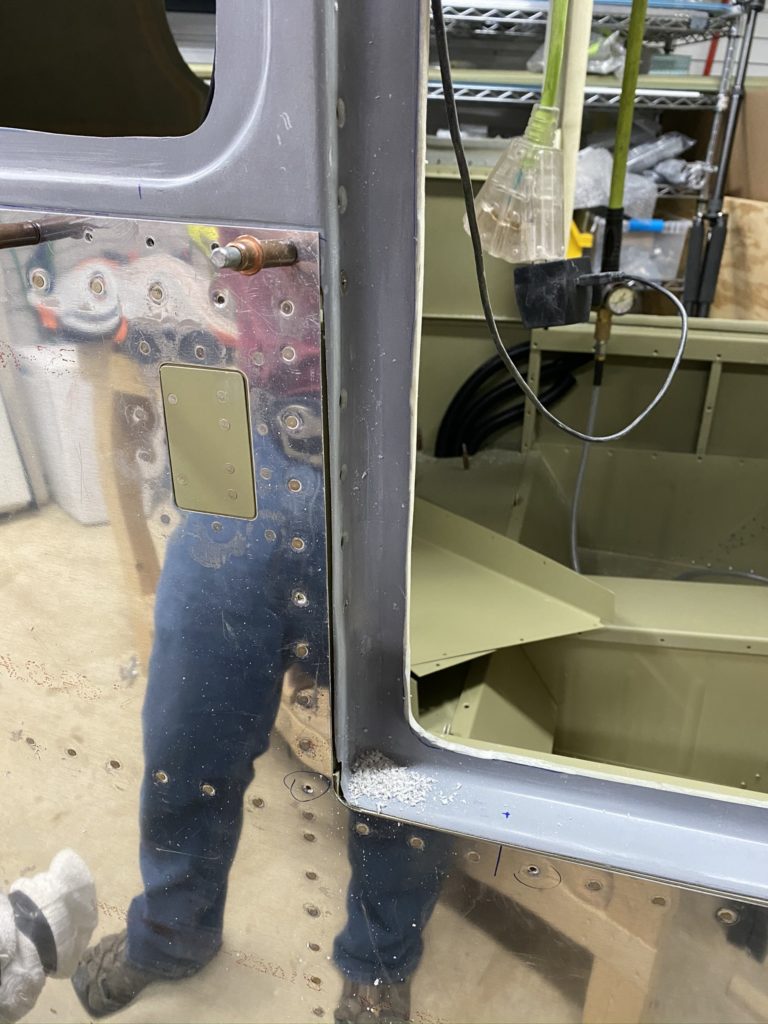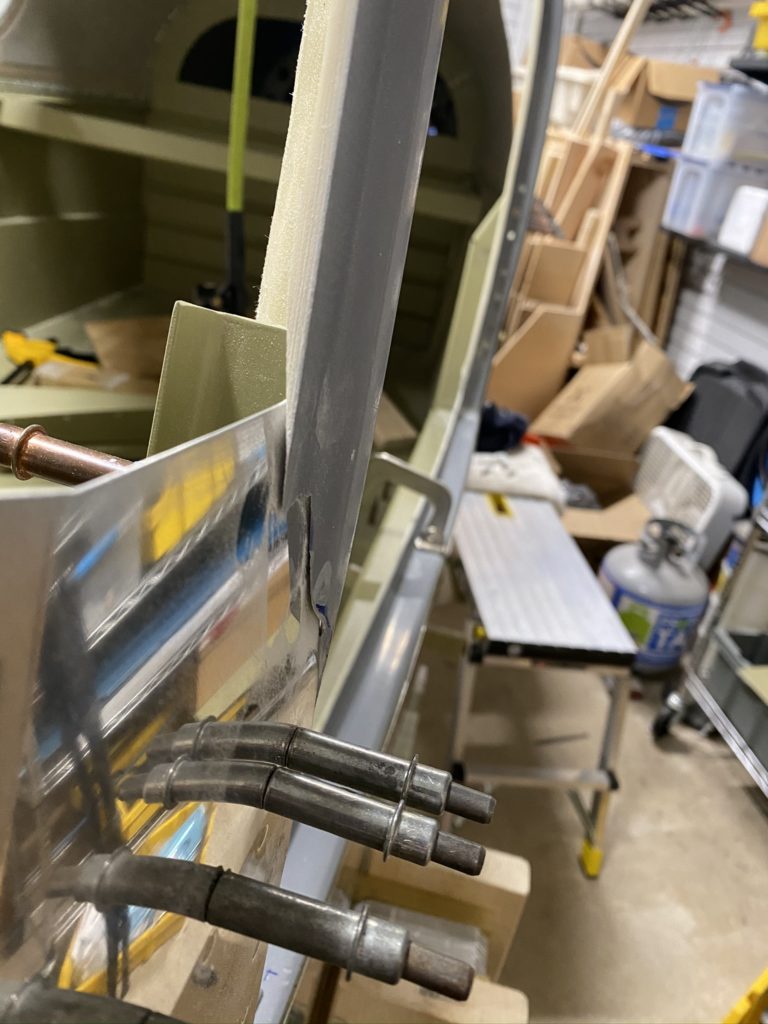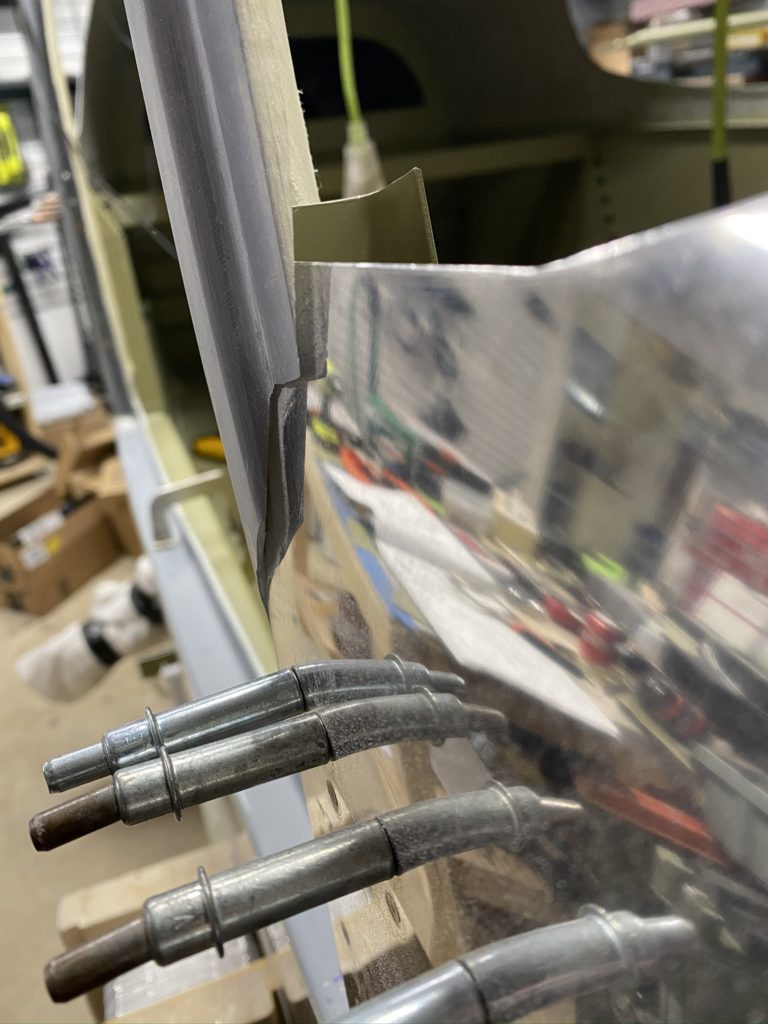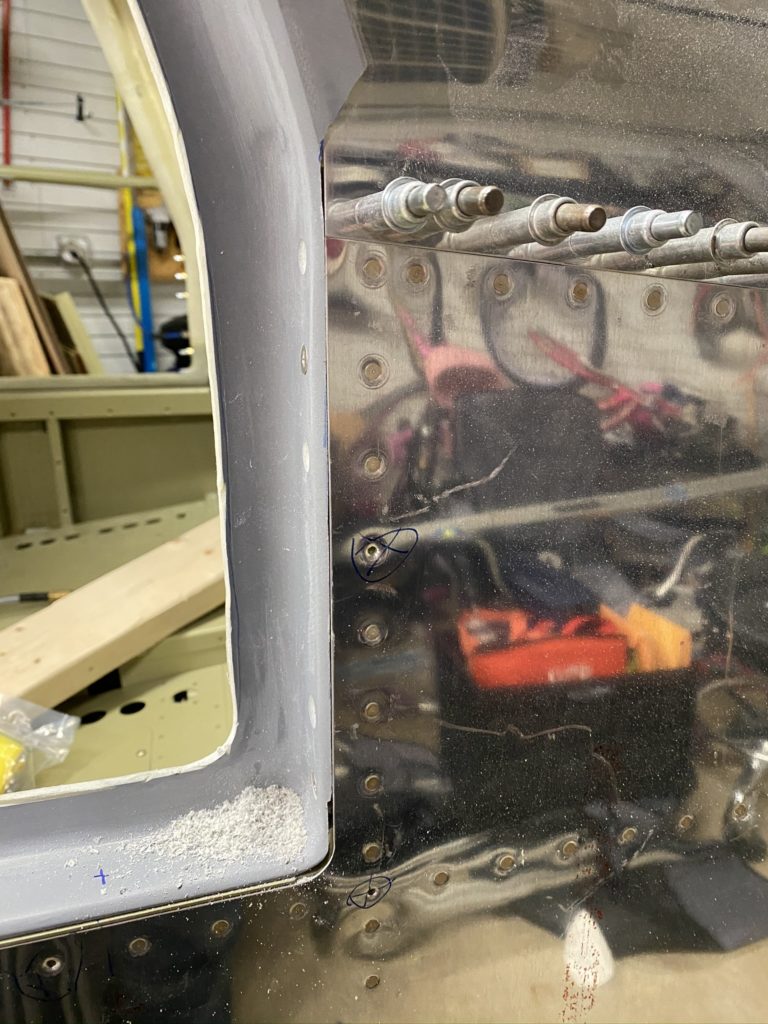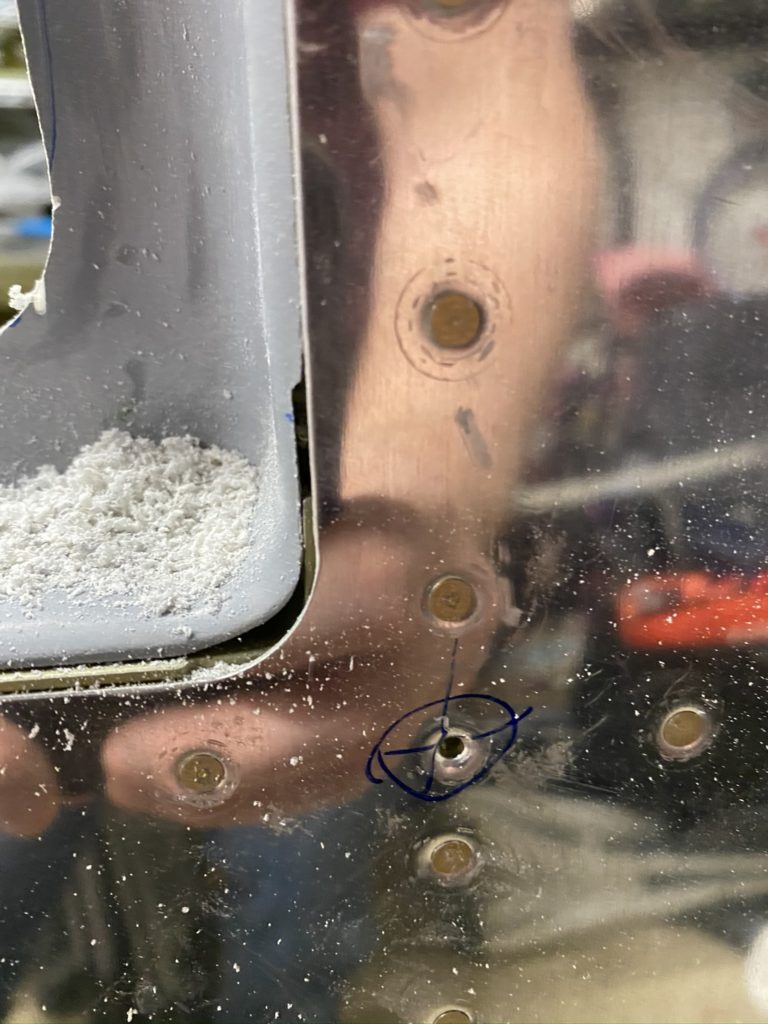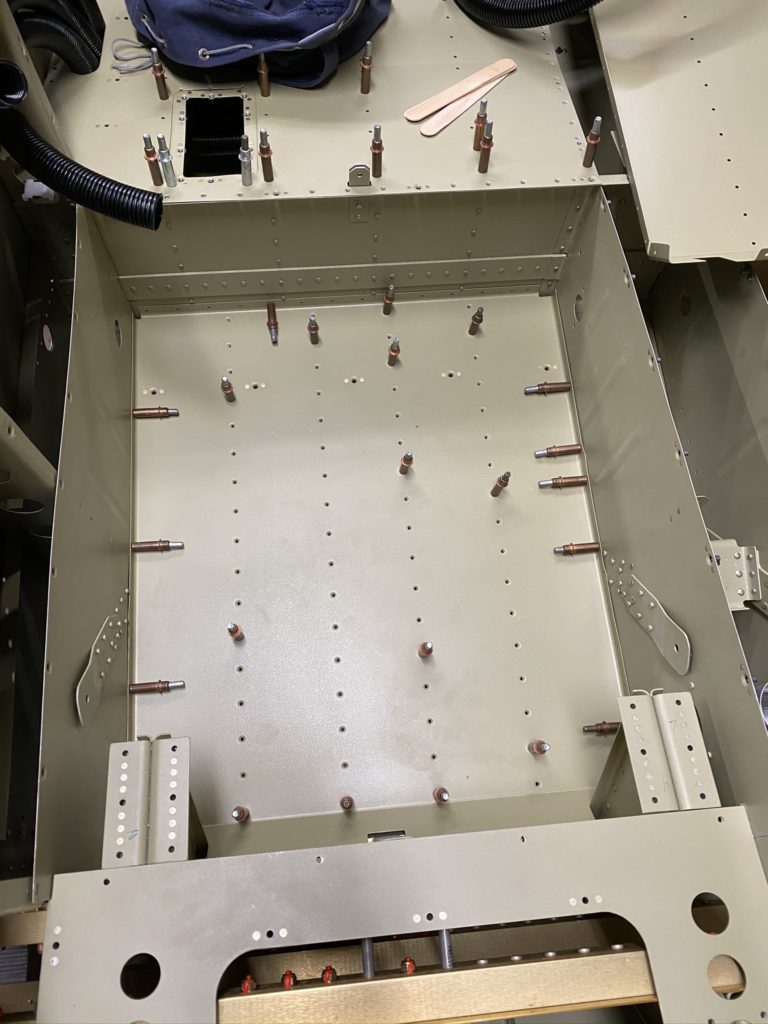With the cabin top basically fitted, I finally gathered my courage and started to drill the aft end of the cabin to the top skin. I had a small mental block as this seemed like permanent step and I really wanted everything to line up perfectly. Finally got to the point where I had to get over myself.
Some small notes: the mid fuse skins did not fully touch the top of the joggle on the cabin top. This was not due to hitting the longerons but due to the door sills needing to be sanded more I guess. I basically had the door sills sanded flush, so I made the decision that it was good enough and I would fair it out with epoxy/flox/micro. We are talking about maybe a 1/16″ gap.

I use some scrap 2×4’s and a reversible clamp and apply some upward pressure on the cabin top so it is tight against the top skin. I then start at the center of the cabin top, and match drill #40 all the holes between the three top longerons. I clean out any trapped dust, then go back to the center and up-drill the holes to #30. This reduced the dust that got between the cabin top and the skin as I drilled at the expense of taking a little longer. Maybe a wash on time/effort.
With the top holes drilled I reposition the wood and clamps so I am appying pressure to the sides of the cabin top and I repeat the same process along the rest of the aft end of the cabin top. Things got progressively easier as I went along and only had to stop a few times to clear out dust between the parts. I then shift my wood shims and drill every 8th hole down the side of the mid-fuse skin into the cabin. Same process. Drill #40, then updrill to #30.
Next was drilling the screw holes into the door sides. I lined up the cabin top per the plans and clamped into place. Using a 90 degree drill, I make the initial #30 hole clecoing as I go. Then up-drill using my regular drill to #12 and using my 3/16 clecos to keep everything in place. To countersink the holes, I end up using my 90 degree drill with the countersink bit in it as I didn’t have a threaded to chucking adapter. I had to free-hand countersink the holes to fit the screws and installed 2-3 screws on each side to keep things in line.
Next I transfer the markings from earlier in the chapter to the cabin door sill and drill the holes up to #19. With a few screws installed the door is pretty solid so I then begin to install the front cabin brace. I then measured and marked the centerline of the cabin top to help align the cabin brace.




